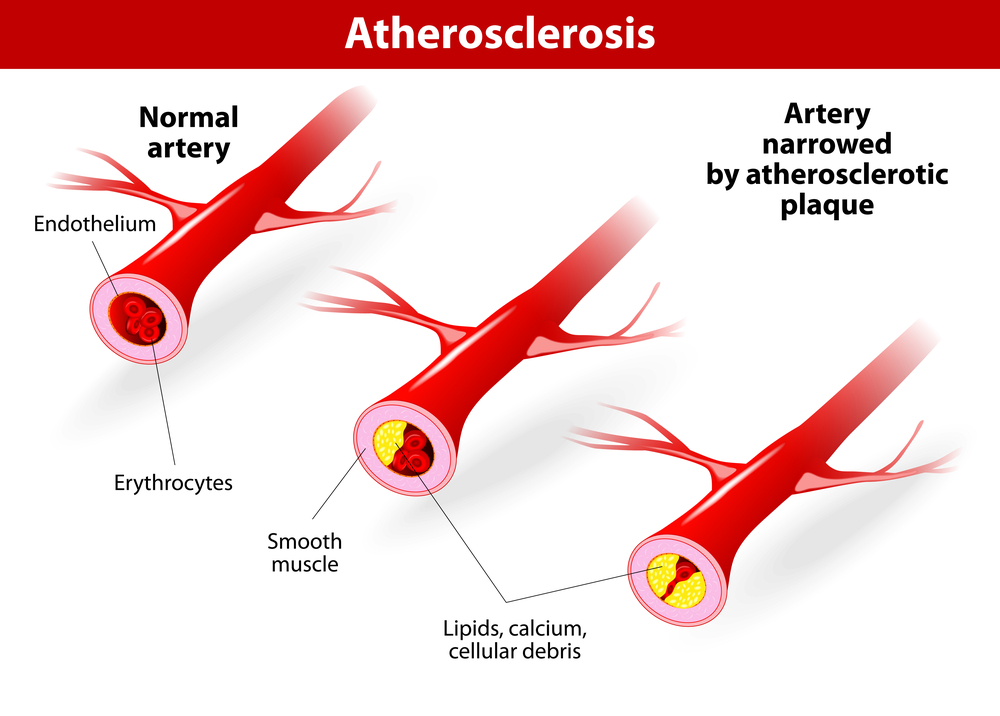Atherosclerosis is a specific form of arteriosclerosis in which an artery wall thickens as a result of invasion and accumulation of white blood cells (WBCs). The accumulation of the WBCs is termed “fatty streaks” early on because of appearance being similar to that of marbled steak. These accumulations contain both living, active WBCs (producing inflammation) and remnants of dead cells, including cholesterol and triglycerides. The remnants eventually include calcium and other crystallized materials, within the outer-most and oldest plaque. The combination of the live and dead cells is termed “fatty streaks” early on and resemble marbled steak. Fatty streaks reduce the elasticity of the artery walls. However, they do not affect blood flow for decades, because the artery muscular wall enlarges at the locations of plaque. The wall stiffening may eventually increase pulse pressure; widened pulse pressure is one possible result of advanced disease within the major arteries.
Atherosclerosis

